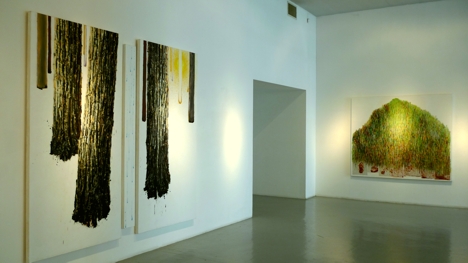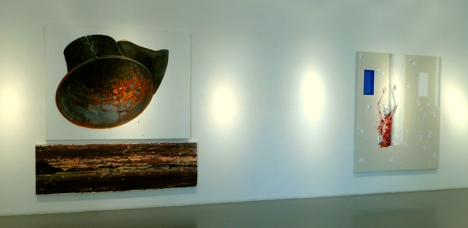Catalog essay “Vera Klement: A Retrospective 1953 – 1986” and art review, “Two part Connection: Vera Klement’s Painting”
Dore Ashton, author, critic, art historian, Professor, the Cooper Union School of Art and Architecture, New York, NY
The Renaissance Society, The University of Chicago, 1987 and Arts Magazine, March 1984
“…Throughout her artistic life Klement has remembered. She has looked back, ransacked her past, searched and unconsciously retrieved, in order to embody a present. Or a presence…”
“…It is rare to find a painter who has followed so affectionately, so cogently an inherent feeling for continuity; who can take a tradition (the near tradition of the Abstract Expressionists) and work out of it into fresh territory. Klement has developed a clear voice full of resonances…”

Review: Vera Klement
Chris Miller, NewCity Art
February 14, 2013
Source
“Klement seems to be working with blasts of insight—eureka moments of understanding where for a flashing instant, outside and inside are one. It’s as if the act of comprehension itself is being comprehended, and judging by her recent work, she’s now a few steps closer to enlightenment. The earlier pieces in this show feel haunted, but the recent ones have the raw excitement of childhood discovery.”


The Power of Art
Paul Klein, HuffPost Contributor
May 11, 2012
Source
“Vera Klement is an octogenarian kid, with the knowledge, wisdom and talent of her years and the energy, output and enthusiasm of someone a quarter of her age. She is a remarkably gifted painter whose work continues to grow — as is apparent in her show opening tonight at Zolla/Lieberman. Her sectioned paintings are like symphonies of self-contained movements that contribute to a larger whole. The poignant beauty of her work references literature, history and us.”

What If a Curator’s Agenda Doesn’t Match the Artist’s?
Paul Klein, Art critic and Editor of Art Letter
May 19, 2011
“Vera Klement is a senior citizen with the energy of a teenager. Most artists decades younger are reprising greatest hits. Vera just keeps growing. She is an underrated giant, genius and beautiful talent. Her work reads like scores of music, which is to say that her pieces are not monolithic compositions but fragments, visual notes, dichotomies and balances. This particular body of works on paper, which opens at Printworks tonight is called American Sublime and references American art from the early to late 1800’s when painters fueled our ‘manifest destiny’ of westward expansion. Images glorified the landscape and the beauty, and downplayed the slaughter of Native Americans. Klement is among other significant artists who are examining issues of and in America’s past and bring new understanding to how we got where we are.”
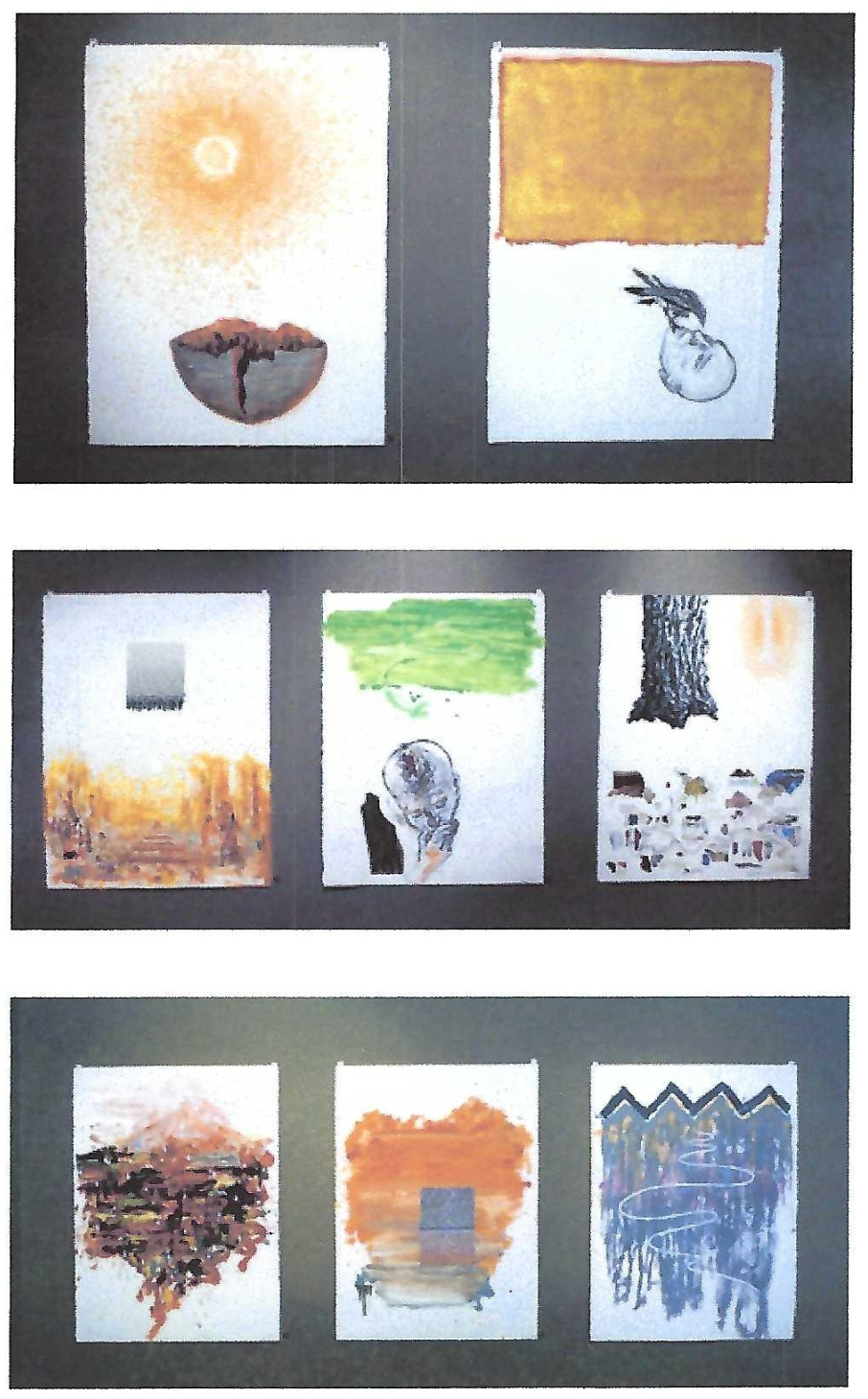

Art Review
Alan Artner, Chicago Tribune
October, 2001
“There are few surprises in the recent paintings by Vera Klement at the Fassbender van Straaten Gallery. The artist’s motifs continue to be lone expressive objects (cauldron, lifeboat, tree, chimney) or figures from mythology (Icarus turned into a woman; Danae at the moment of conceiving Perseus). The style remains gestural.”
“A few of the pieces also testify to Klement’s longstanding penchant for juxtaposing (in separate or abutting canvases) more representational forms with motifs that she has treated more abstractly. Sometimes the two are clearly equal in import. Sometimes one appears as an addendum or an amplifying afterthought.”
“The artist’s painting in oil and wax is usually luscious but seldom merely pretty, even when she sets down stripes in candy colors. The strength with which she builds up her forms is at least as expressive as her often symbolic content, though that, too, gains in power for being circumspect, suggesting rather than forcing.”
“If Klement’s figure paintings still are the strongest, it’s as much how she continues to find potency in myth as how she makes pigment an [sic] vehicle of excitation. These are stirring canvases rooted, as it were, in eternal stories. In a way that is not all common, the vigor of the paint keeps fresh the thrill of the anecdote.”
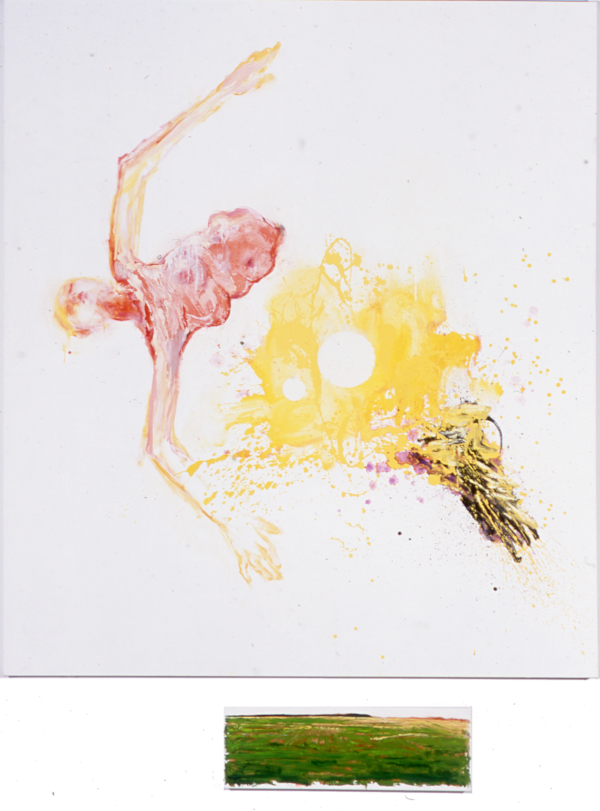
January 12, 2007
“…as ever, Klement proceeds from the premise that one image added to another does not give just two but a distinct third entity that is less seen than felt…”
“…the 2006 painting (The Stones of Camargo) also has the most components of any in recent memory. Klement juggles no fewer than 13 images, which include representations of heads, leaves and feet in addition to abstract passages, one evoking a Barnett Newman “zip”. All are held in balance as associations multiply and reverberate. It is a thrilling performance.”
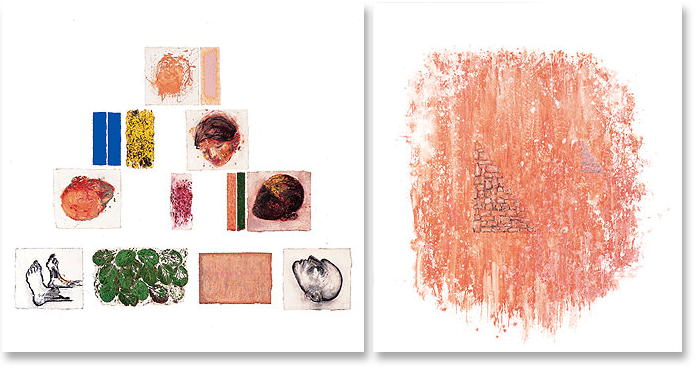
January 16, 2009
“There is a long and distinguished history of bringing together poems and images. Often the images have been intended to illustrate the poems, but a number of other relationships also are possible. Vera Klement explores one of her own in an exhibition of 21 mixed-media pieces based on texts at Printworks. First, she has prepared written translations of short writings by Franz Kafka and Rainer Maria Rilke. That, in itself, is, of course, one form of interpretation. But then she has created a series of collages—11 for the Kafka, 10 for the Rilke–that extend her interest into what she calls “meditations.”
“These meditations are not, properly speaking, illustrations. They’re more like mantras in which bits of text are repeated in printing and writIng while photographic landscape images are set among figurative drawings and abstract gestures. Some of the sense of the poems thus is translated into a pictorial language that fragments the poem, putting this part or that under a microscope. Each text is explored, as it were, facet by facet. And all of the collages together constitute an imaginative extension or recomposition in which, naturalIy, the artist is felt as strongly as the writers. Results, sometimes formally difficult, are usually irresistible, even in our post-literate environment.”


Review
David McCracken, Chicago Tribune
October 29, 1993
“In her latest paintings at Roy Boyd Gallery, Vera Klement continues to delve deeply into such unfashionable subjects as the human condition, life and death, nature and culture.”
“Klement’s large-scale oils on canvas have not changed radically since her last show here. Most still pair a whole or partial figure with an element of landscape and/or a vessel-like object. Typically, the figure is more drawn than painted and in these works appears bluish and wispy, almost phantasmal, while its counterpart is heavily painted and solid.”
“Thus Klement suggests the evanescence of a particular human presence, contrasted with the rootedness and stolidity of her objects. Most directly and movingly, she pulls the two together in “Embrace,” whose pale, disintegrating figure hangs onto a massive tree trunk for dear life.”
“Klement also employs some modular squares in these works that both serve as formal contructs to precisely calibrate her compositions and as quasi-representational objects: floor tiles, window panes, perhaps a representation of painting itself in a piece entitled “Rain,” Klement nudges our reading in that self- conscious direction–as literal and metaphoric vision–as its two panes like eyes give onto a shard of landscape but also obscure it, streaked with painted tears.”
“The wild card in the mix is “Nocturne,” a nearly black painting that looks forthrightly into the void and finds there a late Rothko atmosphere, filled with dim trees and fireflies, or stars.”

Review
Stephen Longmire, New Art Examiner
February 1998
“These are paintings in various states of becoming. There is as much canvas left bare as painted in these works, but it is hard to say which area is the more finished. The images that hover on the surfaces of Vera Klement’s white spaces seem to underscore the voids they cannot fill. Her subjects, like her canvases, are vessels, second shells for the body on its watery journey of life.”
“Over and over, Klement paints boats and swimmers in all their manifestations. The boats become bathtubs or coffins, the swimmers fish or birds. The journey is always the same, it need not be more specific. The swimmer crawls to land and embraces the trunk of a tree from which another boat may be carved. The bold scale of the canvases (up to 90 by 108 inches) allows us to see these poetic figures come to life, then disintegrate into brushwork of extraordinary freshness and color as we approach or take leave of them.”
“In as much as they are pictorial at all, these recent paintings stand in a distinct relationship to Klement’s earlier abstraction—and to the history of painting, which she treats as if it were a personal memory. Blank rectangles of white, barely visible on many of her canvases, seem a homage to her years of formalist color play. They remind us how evacuated of content images have become in this image-soaked modernity. Ubiquitous as they are, contemporary images are seldom granted the metaphysical authority to which these paintings aspire. Sometimes the white rectangles twist and become parallelograms or trapezoids, foreshortened into a distance the canvases can only suggest. These orthogonals reach back into painting’s representational Renaissance past. They are bridges to a world of holier imagery, summoned now for its dislocating sustenance.”
“Often Klement’s paintings flow onto a second canvas, sometimes a third. The addendum will usually be a slender, dark abstraction, undergirding the painting as if it were its unconscious mind. In Narcisse, the usual order is fittingly reversed: a long, dark color-field canvas rides above, with Narcissus’s head gazing down from it like a globe, into the scattered reflection below. In a sense, the subject of Klement’s marvelous recent work is painting’s unconscious, as well as a painter’s.”

Review
Joanna Frueh, Art in America
1994
“In a career that spans 40 years, Klement has cycled between abstraction and figuration. In 1982 grieving figures appeared in her paintings, and in the late ’80s there were frequently swimmers, stretching and yearning, melancholy and scrawny. Now the swimmers, barely identifiable as female and older, are confident, even ecstatic. In Mermaid a beautiful creature swims on her back, arches her fleshy torso and swishes her tail. Swimmer and Retrieved Vessel shows a buoyant figure with short blonde hair above two rectangles, one bright white, the other grayish and filled with a pitcher shape whose pinks and reds pulsate like a bodily organ.”
“Flexibility and ease describe the swimmers as well as a state of mind that the paintings convey: their ardor and serenity slow the pace in a contemporary world of relentless urgency. Throughout the nine paintings in this show, all but one dated 1993 and all from 5 to 7 feet in the largest dimension, not only human figures but objects and geometric forms appear on white grounds and consistently project the feeling of weightlessness. In Fish Box a monumental aggregation of brushstrokes in sunny and autumnaI colors forms a haystack as imposing as a pyramid or a sacred mountain. The haystack floats above a blue-black slab that reads as a coffin yet somehow seems visually inviting.”
“Klement’s mixture of figuration and abstraction resonates with references to 19th- and 20th-century art: Friedrich’s lone figures communing with nature, Symbolist forests, Cézanne’s direct, deliberate application of paint, Minimalist simplicity and repetition. Unlike many in the contemporary art world, Klement embraces romantic moods and poetic richness of effect. In one painting a figure flings its arms around a tree trunk. In another, a massive hedge bleeds in stains and splatters. In a third a dark, fairytale wood that begs to be entered lies beyond a field of red nipples that at first glance might be taken for flowers. Vibrant, luscious color is paramount, as is light. Whites vary in brilliance and opacity; scaly bark is yellow with sunlight and the tree’s own radiance. Hues bear intuited meanings that escape the confines of narrative or symbolism, as do objects (a bathtub, a disembodied head) and forms (rectangles which suggest windows and floor tiles). The words pleasure, concentration and finesse come to mind when one views Klement’s works, and they suggest that both her figures and the paintings themselves exist in a state of grace.”
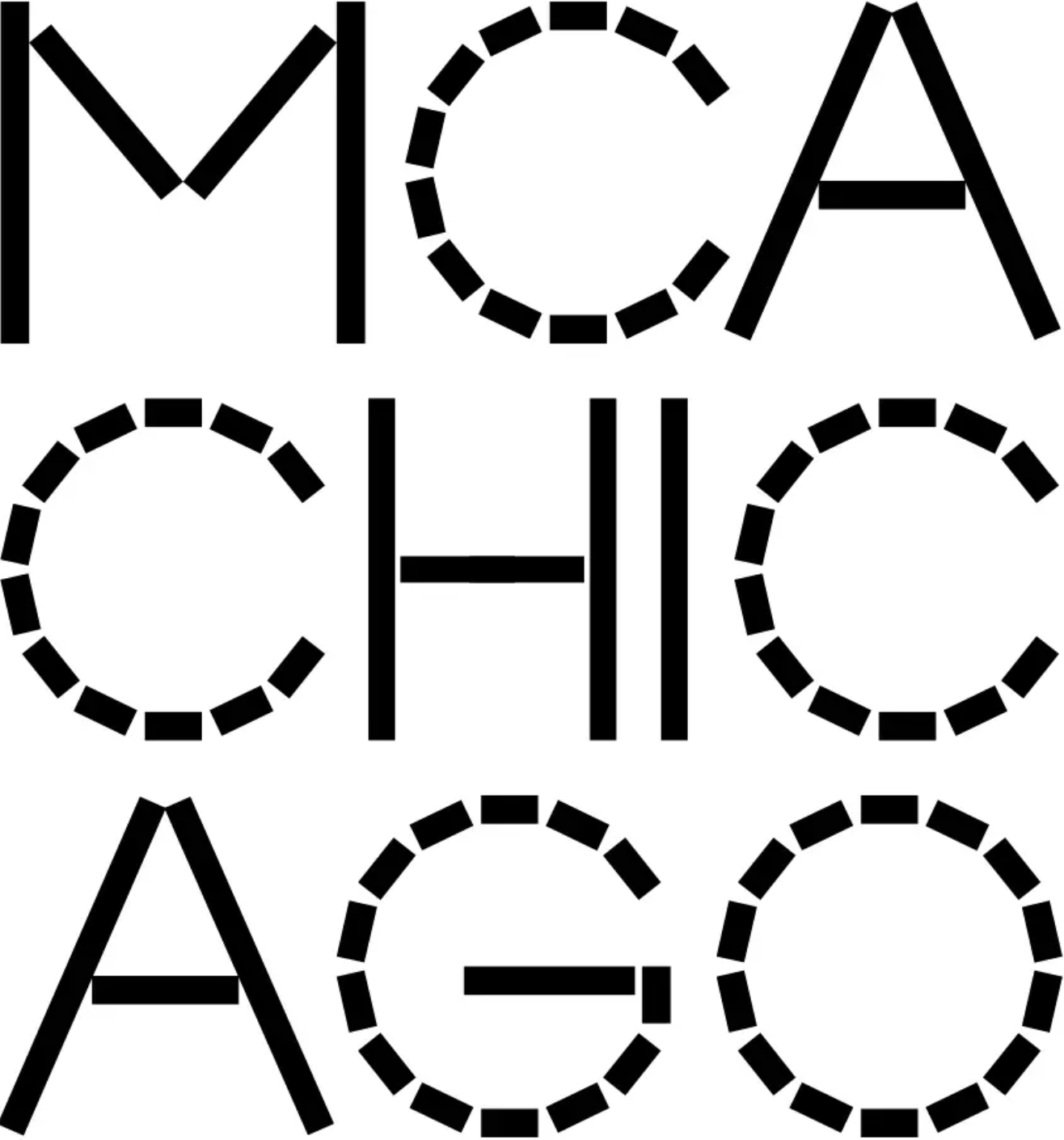
Catalog essay “Unnamable, The Paintings of Vera Klement”
Lynne Warren, Curator – the Museum of Contemporary Art, Chicago
Exhibition: Vera Klement, Paintings 1991 – 2004, at the Daum Museum of Contemporary Art in Sedalia, Missouri
2004-2005
“…This must be what it is like to be a painterly painter. This is what it must be like to be Vera Klement. Swinging back and forth between color, pattern, texture, contrast and the construction of an image, the return to color and pattern, being seduced by the viscous pigments and the textures they can create, the furrows, the hills and valleys, the sweeping washes, and returning to the creation of an image, a story, a state where emotions hang suspended, captured in line and color and texture and shapes…”
Catalog essay “Paint into Icon: Vera Klement Paintings from 1994 – 2008”
James Yood, Visiting Professor of Art History, Theory & Criticism and Director, New Arts Journalism Program, The School of the Art Institute of Chicago, Contemporary Art Critic, Artforum magazine
Exhibition: Vera Klement, Paintings 1994 – 2008, at the Rockford Art Museum in Rockford, IL
Oct 17, 2008 – Jan 4, 2009
“Vera Klement’s art matters because life matters… Artists such as Vera Klement ask in their art what perhaps more of us should ask in our lives — why are we here, what does my place in the world mean, what are these things that I feel, what is my relationship to nature, what is this rapture and despair, how can I make sense of history and culture, how is my journey through life both unique and part of some larger process?”
“…it is the dignity of her search that we celebrate in an exhibition such as this, the bursts of self-knowledge and truth embedded in these images, the hard-won moments of revelation they offer us, their gift of letting us touch another human mind…”
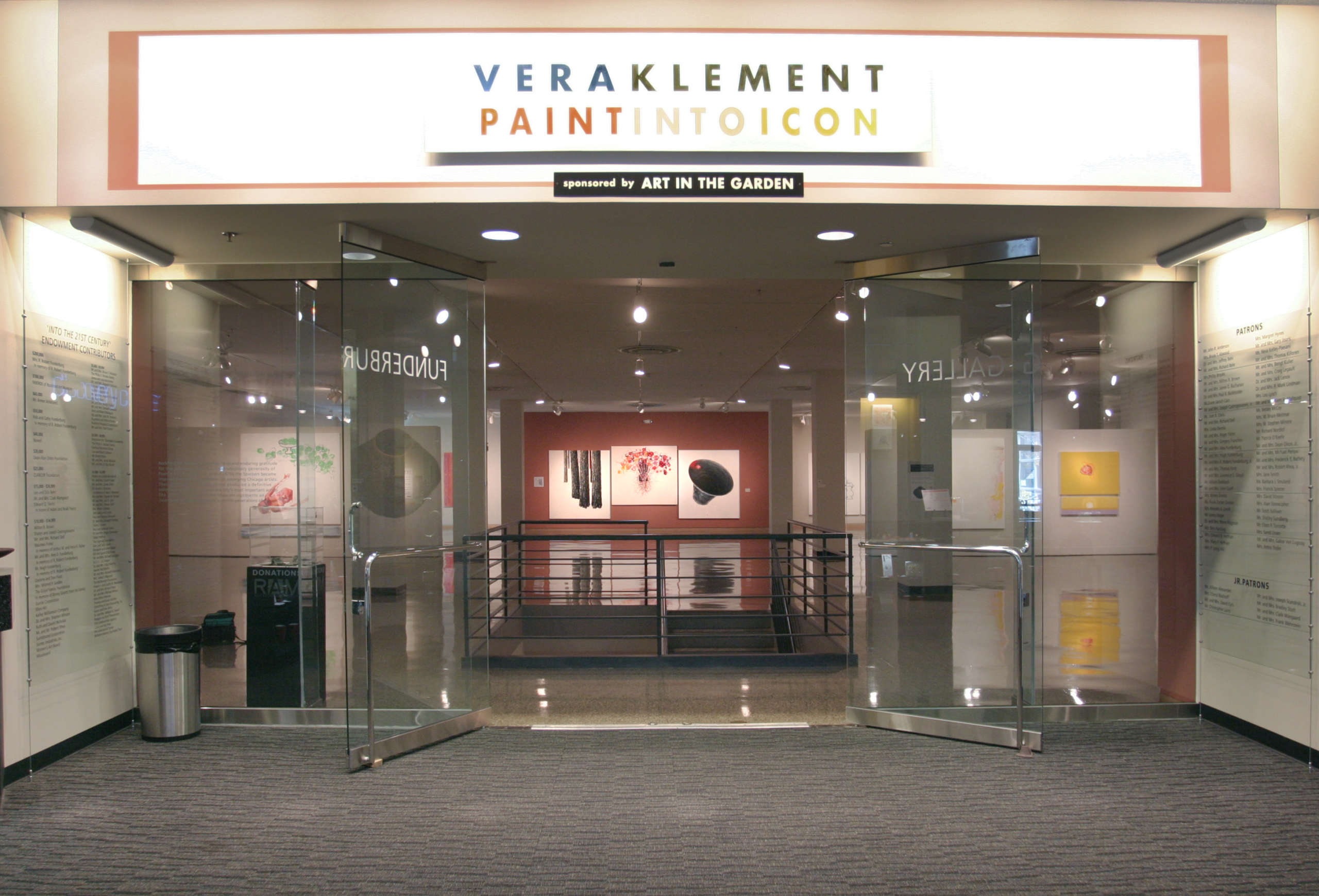
Catalog essay “Vera Klement, The Recent Paintings”
Gerald Nordland, author, former director of the Milwaukee Art Museum, the San Francisco Museum of Modern Art among others
2001
“…Klement recognizes the mediumistic role of the artist through which art passes into existence. She also senses that this occurs when circumstances are right, and she recognizes that she “sets the stage” for it to happen in her multiple image works, by following thought’s dictation in the primary image; by ignoring those anxieties which devil one to “solve” a work rationally, but forces herself to wait for a secondary image — within her specific requirements — to present itself…”
“…Where earlier works were about unity within diversity of related parts, the new works are more risky, and seem closer to the hallucinatory poetry of a Magritte, an Arthur Rimbaud, or a Lautréamont…”
Catalog essay “Painter par Excellence: Vera Klement paintings 1965 – 1998”
Gregory G. Knight, Chief curator and head of the Department of Cultural Affairs, the Chicago Cultural Center
Retrospective at the Chicago Cultural Center
1999
“…the absolute centrality of her images, her profound engagement with her materials, and the inseparable connection between paint and the most crucial aspect of Being constitute her signature. In the best tradition of Western painting, and with all the gusto of the last half of the twentieth century, Vera Klement truly revels in paint and its processes, giving us undeniably powerful visions to hold onto.”
Catalog essay “Vera Klement: Things Made Mythic”
Sue Taylor, author, critic, contributing editor of Art in America, Professor of Art History, Portland State University, Oregon
Vera Klement, Paintings 1965 – 1998 at the Chicago Cultural Center
1999
“In love with the palpable materiality of objects, Vera Klement celebrates their “thingness” in lush paintings that are also richly metaphorical, elegiac yet joyous. In all her work, we are struck by the impressive substance of paint thickly and expertly applied as well as by the emphatically sculptural presence of the things paint describes…”
“…The felt identification with nature understood by German Romantic painters as Identitätsphilosophie has special poignancy for this artist whose exile from her original homeland continues to inform her worldview…”
Catalog essay “Vera Klement’s Poem-Paintings”
Donald Kuspit, author, critic, art historian, Professor, State University of New York, Stony Brook
1997
“…Subject matter and style converge with a rare poignancy and resonance in Vera Klement’s poem-paintings, as I call her pictures.”
“…Klement gives us, in singular imaginative moments, sensations of falling, loss, death: radical bleakness — from which we are rescued by radiant color. Its presence transforms the canvas, filling its emptiness with grace: unexpectedly, the desert light of the canvas becomes gnostic, suggesting that salvation can be created out of — come out of — nothing…”
“…Rooted in historical awareness of human misery, Klement’s poem-paintings rise to the mystical heights of moral and existential myth, like prayers.”
Catalog essay
Judith Russi Kirshner, Critic, curator and Dean of the College of Architecture and the Arts at the University of Illinois, Chicago
Brody’s Gallery, Washington D.C.
1992
“Klement thematizes a central paradox for her work and the entire enterprise of contemporary painting — the impossibility of depiction…”
“Klement’s vision, now mature and exquisite in its artistic control, can afford to present unfinished narratives; she depicts disparate components from land and sea and celebrates situations where everything is out of its element.”
“…The grand trees are steadfast sentinels, signs of endurance and witnesses to the joy of these visible coincidences that appear like allegories of subjectivity from the artist’s generous imagination.”

